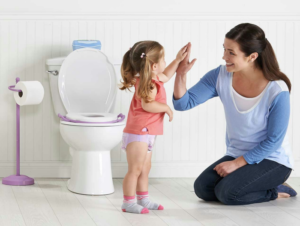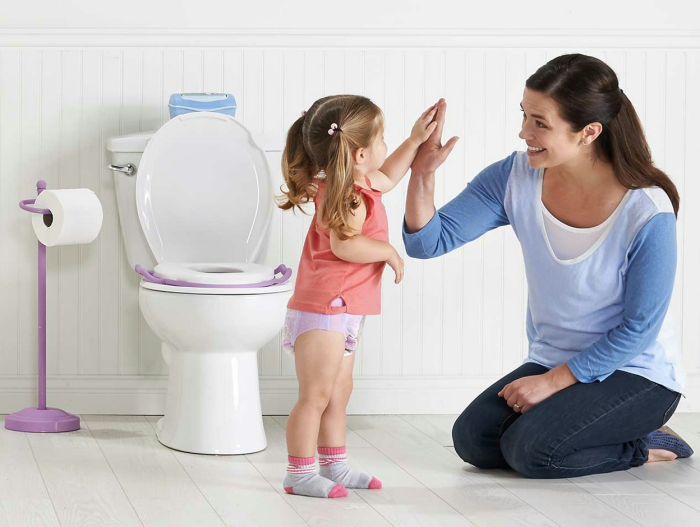By Preschool Teachers
 Many parents are unsure about when to start toilet training or “potty training.” Here, we will discuss about potty training.
Many parents are unsure about when to start toilet training or “potty training.” Here, we will discuss about potty training.
What is potty training?
Potty training is teaching your child to recognize their body signals for urinating and having a bowel movement. It also means teaching your child to use a potty chair or toilet correctly and at the appropriate times.
Potty training is a major milestone. It is an important skill that further develops your child’s independence and increases their confidence. This is usually between 18 months and 3 years.
The most important thing to remember is that potty training is a process.
If you’ve decided that your child is ready to start learning how to use the potty, these tips may help:
- Set aside some time to devote to the potty-training process.
- Don’t make your child sit on the toilet against his or her will.
- If there are siblings, ask them to let the younger child see you praising them for using the toilet.
- Show your child how you sit on the toilet and explain what you’re doing (because your child learns by watching you). You also can have your child sit on the potty seat and watch while you (or a sibling) use the toilet.
- Establish a routine. For example, you may want to begin by having your child sit on the potty after waking with a dry diaper, or 45 minutes to an hour after drinking lots of liquids. Only put your child on the potty for a few minutes a couple of times a day, and let your child get up if he or she wants to.
- Have your child sit on the potty within 15 to 30 minutes after meals to take advantage of the body’s natural tendency to have a bowel movement after eating (this is called the gastro-colic reflex). Also, many kids have a time of day they tend to have a bowel movement.
- Ask your child to sit on the potty if you see clear clues of needing to go to the bathroom, such as crossing legs, grunting, or squatting.
- Empty a bowel movement (poop) from your child’s diaper into the toilet, and tell your child that poop goes in the potty.
- Avoid clothes that are hard to take off, such as overalls and shirts that snap in the crotch. Kids who are potty training need to be able to undress themselves.
- Offer your child small rewards, such as stickers or time reading, every time your child goes in the potty. Keep a chart to track of successes. Once your little one appears to be mastering the use of the toilet, let him or her pick out a few new pairs of big-kid underwear to wear.
- Make sure all caregivers — including babysitters, grandparents, and childcare workers — follow the same routine and use the same names for body parts and bathroom acts. Let them know how you’re handling toilet training and ask that they use the same approaches so your child won’t be confused.
- Praise all attempts to use the toilet, even if nothing happens. And remember that accidents will happen. It’s important not to punish potty-training children or show disappointment when they wet or soil themselves or the bed. Instead, tell your child that it was an accident and offer your support. Reassure your child that he or she is well on the way to using the potty like a big kid.
Potty training doesn’t usually come easily, so don’t underestimate the process. It’s all about waiting for signs of readiness in your child. We hope that these tips can help you and your child during potty training. Don’t lose hope if it isn’t happening as seamlessly as you’d like. Good luck, parents!
Source:
https://kidshealth.org/en/parents/toilet-teaching.html
https://www.stanfordchildrens.org/en/topic/default?id=toilet-training-90-P02300



